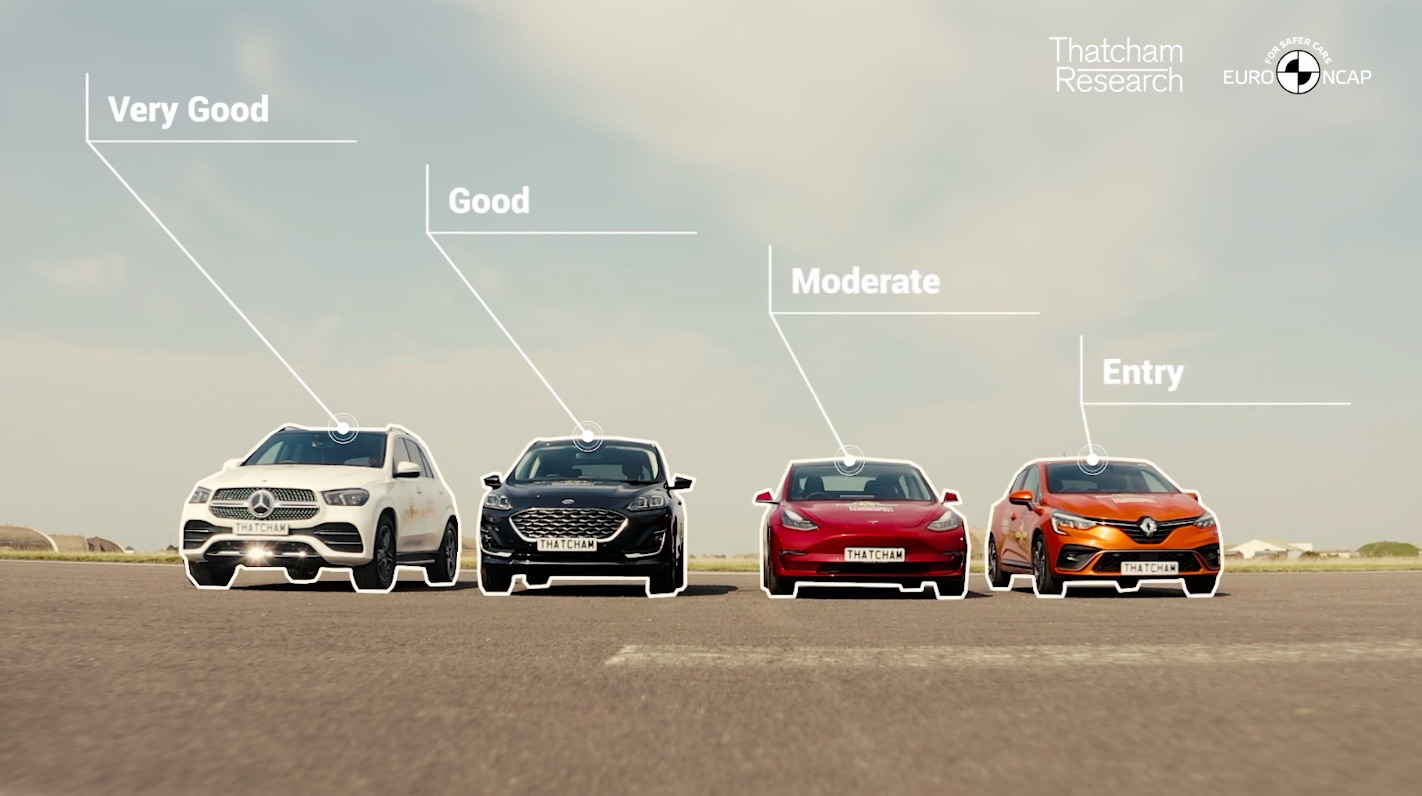
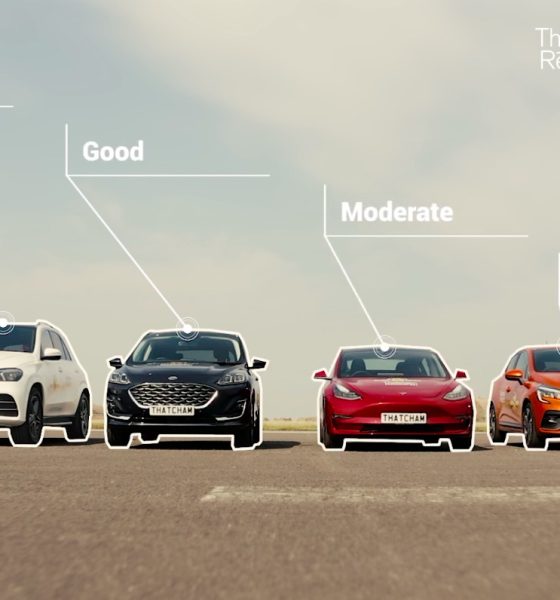
News
Tesla Model 3 gets penalized in Europe despite top scores in vehicle assistance and safety
In collaboration with Thatcham Research, the Euro NCAP has launched the world’s first Assisted Driving Grading system, a new set of metrics that are specifically designed to evaluate the driver-assist systems of cars available on the market today. For its first batch of vehicles, the firms evaluated 10 cars, from premium SUVs like the Mercedes-Benz GLE to affordable hatchbacks like the Renault Clio to all-electric vehicles like the Tesla Model 3.
As noted by Thatcham Research Director of Insurance Research Matthew Avery in a video outlining the results of the Assisted Driving Grading system’s first tests, vehicles would be graded on three metrics: the level of vehicle assistance that they provide, the level of driver engagement that they offer, and the effectiveness of their safety backup systems. The results of these tests, especially on the Tesla Model 3’s part, were rather peculiar, to say the least.
Out of 10 vehicles that were evaluated, the Tesla Model 3 ranked 6th with a “Moderate” grade, falling behind the Mercedes-Benz GLE, BMW 3-Series, and Audi Q8, which were graded as “Very Good,” and the Ford Kuga, which received a “Good” rating. This was despite the Tesla Model 3 receiving the top scores in the “Vehicle Assistance” and “Safety Backup” metrics.
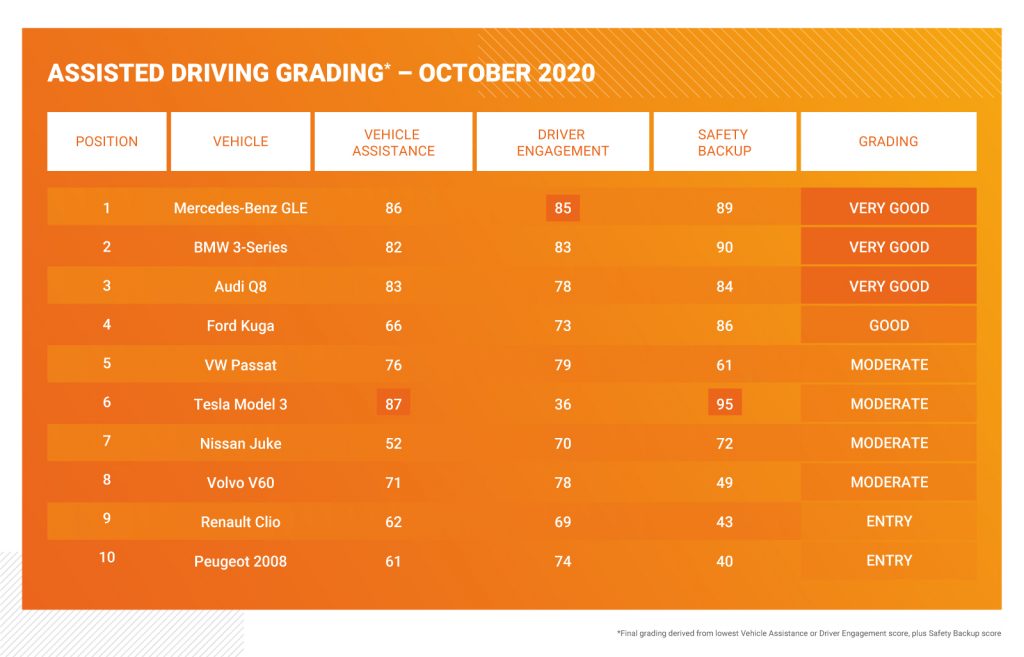
The study, for example, dubbed the Model 3 as outstanding in terms of steering assistance, with the vehicle steering itself exceptionally well through an S-shaped curve at speeds of 80, 100, and 120 km/h. Tesla’s lane change systems were also satisfactory, despite the system’s limitations in Europe. Distance control was dominated by the Model 3 as well, with the evaluators stating that Tesla’s adaptive cruise control featured a “high level of technical maturity.” From a score of 100, Tesla’s vehicle assistance received a score of 87, the highest among the cars tested.
The Model 3’s safety backup systems were also a league above its competition. As noted in a post from the Allgemeiner Deutscher Automobil-Club e.V. (ADAC), Tesla demonstrated its strengths with the Model 3’s collision avoidance systems. The all-electric sedan earned a perfect score in the firms’ tests, outperforming its premium German competition. Overall, the Model 3 received an impressive score of 95 in the Assisted Driving Grading system’s “Safety Backup” metric.
Considering these scores, one might wonder why the Model 3 ended up ranked 6th among the 10 vehicles tested by the Euro NCAP and Thatcham Research. As it turned out, this was because of the Model 3’s poor scores in the “Driver Engagement” metric, where the vehicle only earned a score of 35 out of 100. So poor was the Model 3’s scores in this metric that it was ranked last among the 10 vehicles that were evaluated.
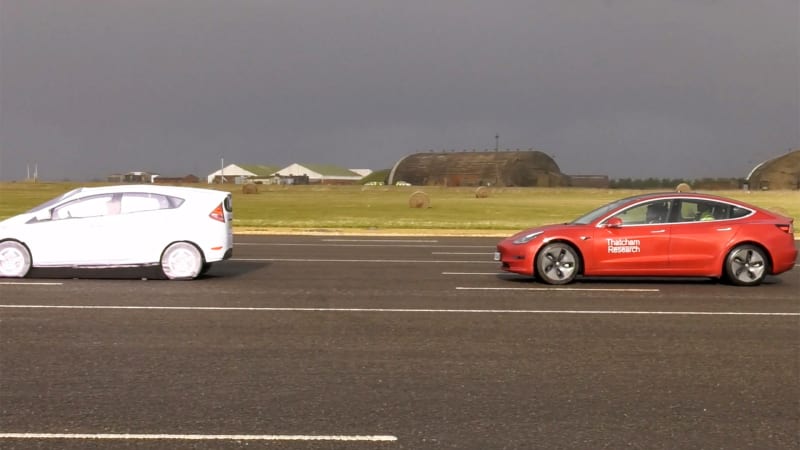
A look at the reasons behind the Model 3’s poor scores in “Driver Engagement” includes a number of interesting insights from Thatcham Research and the Euro NCAP. When testing the vehicles’ steering override functions, for example, the evaluators stated that the Model 3 resisted steering overrides from its driver. These issues were explained in the ADAC’s post.
“Should the driver make a steering movement in order to avoid an object or a pothole in the roadway, the steering assistant should allow this without resistance. In the Tesla Model 3, for example, this is not the case. Apparently, Tesla trusts the system more than its driver. The necessary cooperative assistance is not given. Instead, the Tesla system prevents its driver from attempting to intervene – it mustn’t be,” the ADAC remarked in its post.
Even more interesting is that part of the Model 3’s poor “Driver Engagement” scores was due to the term “Autopilot,” which Tesla uses to describe its driver-assist suite. The evaluators argued that the term “Autopilot” was misleading and irresponsible on Tesla’s part, and this was heavily taken against the Model 3’s rankings in the Assisted Driving Grading system.
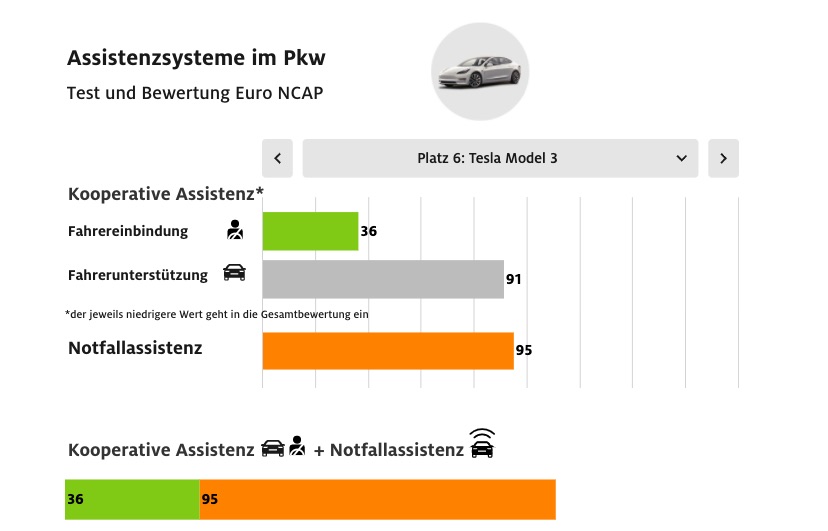
“When it comes to the first test criterion – consumer information – the Tesla Model 3 in particular fails. The assistance systems are referred to as “Autopilot” in the operating instructions for the Model 3 as well as in the sales brochures and in marketing. However, the term suggests capabilities that the system does not have in sufficient measure. It tempts the driver to rely on the capabilities of the system – which is currently not allowed by the legislature anyway. Due to its good quick-start operating aid, the Tesla Model 3 still receives 10 points,” the evaluators noted.
Ultimately, these complaints about Autopilot’s branding ended up pulling down the Model 3’s scores to the point where the all-electric sedan was ranked below the Ford Kuga. Thatcham Research Director of Insurance Research Matthew Avery explained this in a video released about the evaluation. “The Tesla Model 3 was the best for safety backup and vehicle assistance but lost ground for misleading consumers about the capability of its Autopilot system and actively discouraging drivers from engaging when behind the wheel,” Avery said.
As noted by Avery, it is pertinent for vehicles to exhibit a balance to score very well in the Assisted Driving Grading system. This was not achieved by the Model 3 despite its industry-leading backup safety systems and actual vehicle assistance tech. ADAC explained it best when outlining why the Tesla Model 3 lost to four other vehicles despite being equipped with what is noticeably the most advanced driver-assist system.
“When analyzing the test results, it is noticeable that the Tesla Model 3 has the most advanced assistance systems. With 95 points for emergency assistance (Safety Backup) and 91 points for technical assistance, it doesn’t beat the Mercedes GLE by far, but at least 11 points… Because Euro NCAP removes the many points in the area of driver support from the Tesla, because on the one hand it does not sufficiently comply with the driver’s request for a steering correction. On the other hand, because Tesla is irresponsible about the term autopilot – an even more serious reason. With only 36 points from the test area driver integration, the Tesla falls back to sixth place in the final bill,” the ADAC noted.
Thatcham Research’s overall findings could be viewed in the video below.

Elon Musk
Judge clears path for Elon Musk’s OpenAI lawsuit to go before a jury
The decision maintains Musk’s claims that OpenAI’s shift toward a for-profit structure violated early assurances made to him as a co-founder.
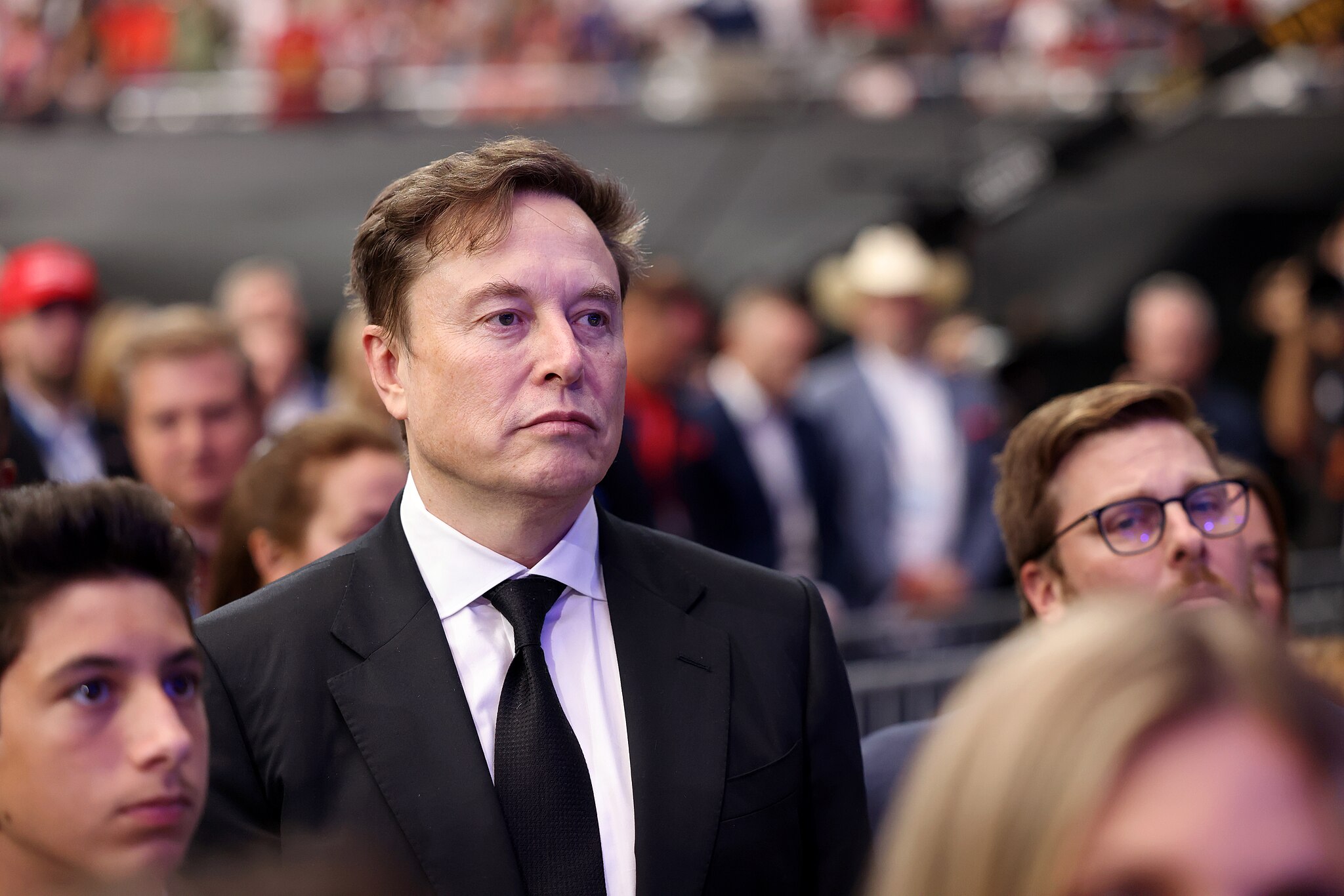
A U.S. judge has ruled that Elon Musk’s lawsuit accusing OpenAI of abandoning its founding nonprofit mission can proceed to a jury trial.
The decision maintains Musk’s claims that OpenAI’s shift toward a for-profit structure violated early assurances made to him as a co-founder. These claims are directly opposed by OpenAI.
Judge says disputed facts warrant a trial
At a hearing in Oakland, U.S. District Judge Yvonne Gonzalez Rogers stated that there was “plenty of evidence” suggesting that OpenAI leaders had promised that the organization’s original nonprofit structure would be maintained. She ruled that those disputed facts should be evaluated by a jury at a trial in March rather than decided by the court at this stage, as noted in a Reuters report.
Musk helped co-found OpenAI in 2015 but left the organization in 2018. In his lawsuit, he argued that he contributed roughly $38 million, or about 60% of OpenAI’s early funding, based on assurances that the company would remain a nonprofit dedicated to the public benefit. He is seeking unspecified monetary damages tied to what he describes as “ill-gotten gains.”
OpenAI, however, has repeatedly rejected Musk’s allegations. The company has stated that Musk’s claims were baseless and part of a pattern of harassment.
Rivalries and Microsoft ties
The case unfolds against the backdrop of intensifying competition in generative artificial intelligence. Musk now runs xAI, whose Grok chatbot competes directly with OpenAI’s flagship ChatGPT. OpenAI has argued that Musk is a frustrated commercial rival who is simply attempting to slow down a market leader.
The lawsuit also names Microsoft as a defendant, citing its multibillion-dollar partnerships with OpenAI. Microsoft has urged the court to dismiss the claims against it, arguing there is no evidence it aided or abetted any alleged misconduct. Lawyers for OpenAI have also pushed for the case to be thrown out, claiming that Musk failed to show sufficient factual basis for claims such as fraud and breach of contract.
Judge Gonzalez Rogers, however, declined to end the case at this stage, noting that a jury would also need to consider whether Musk filed the lawsuit within the applicable statute of limitations. Still, the dispute between Elon Musk and OpenAI is now headed for a high-profile jury trial in the coming months.
News
Tesla Giga Shanghai celebrates 5 million electric drive unit milestone
The milestone was celebrated by the company in a post on its official Weibo account.

Tesla China has reached another manufacturing milestone at Gigafactory Shanghai, rolling out the facility’s 5 millionth locally produced drive unit.
The milestone was celebrated by the company in a post on its official Weibo account. In its post, the Giga Shanghai team could be seen posing with the 5 millionth drive unit.
Giga Shanghai’s major benchmark
The milestone drive unit was produced at Gigafactory Shanghai, which produces the Model Y and the Model 3. In a release, Tesla China noted that its three-in-one integrated electric drive system combines the motor, gearbox, and inverter into a single compact assembly. This forms a powerful “heart” for the company’s electric cars.
Tesla China also noted that its drive units’ integrated design improves energy conversion efficiency while reducing overall weight and complexity, benefits that translate into stronger performance, improved handling, and longer service life for its vehicles.

The new milestone builds on earlier achievements at the same site. In July 2024, Tesla announced that its 10 millionth electric drive system globally had rolled off the line at the Shanghai plant, making it the first self-produced Tesla component to reach that volume.
More recently, the factory also produced its 4 millionth China-made vehicle, a Model Y L. The factory has also continued hitting global production milestones, rolling out Tesla’s 9 millionth EV worldwide late last year, with the landmark vehicle being a Tesla Model Y.
Tesla China’s role
Construction of Giga Shanghai began in January 2019, with production starting by the end of that year. This made it the first wholly foreign-owned automotive manufacturing project in China. The facility began delivering Model 3 vehicles locally in early 2020 and added Model Y production in 2021. The plant is now capable of producing about 1 million vehicles annually.

Throughout 2025, Giga Shanghai delivered 851,732 vehicles, representing a 7.08% year-on-year decline, according to data compiled by CNEVPost. Even so, recent months showed renewed momentum.
In December alone, Tesla China recorded wholesale sales of 97,171 vehicles, including domestic deliveries and exports, making it the company’s second-best monthly total on record, per data from the China Passenger Car Association. Retail sales during December reached roughly 94,000 units, up about 13% year over year.
Investor's Corner
Tesla price target boost from its biggest bear is 95% below its current level

Tesla stock (NASDAQ: TSLA) just got a price target boost from its biggest bear, Gordon Johnson of GLJ Research, who raised his expected trading level to one that is 95 percent lower than its current trading level.
Johnson pushed his Tesla price target from $19.05 to $25.28 on Wednesday, while maintaining the ‘Sell’ rating that has been present on the stock for a long time. GLJ has largely been recognized as the biggest skeptic of Elon Musk’s company, being particularly critical of the automotive side of things.
Tesla has routinely been called out by Johnson for negative delivery growth, what he calls “weakening demand,” and price cuts that have occurred in past years, all pointing to them as desperate measures to sell its cars.
Johnson has also said that Tesla is extremely overvalued and is too reliant on regulatory credits for profitability. Other analysts on the bullish side recognize Tesla as a company that is bigger than just its automotive side.
Many believe it is a leader in autonomous driving, like Dan Ives of Wedbush, who believes Tesla will have a widely successful 2026, especially if it can come through on its targets and schedules for Robotaxi and Cybercab.
Justifying the price target this week, Johnson said that the revised valuation is based on “reality rather than narrative.” Tesla has been noted by other analysts and financial experts as a stock that trades on narrative, something Johnson obviously disagrees with.
Dan Nathan, a notorious skeptic of the stock, turned bullish late last year, recognizing the company’s shares trade on “technicals and sentiment.” He said, “From a trading perspective, it looks very interesting.”
Tesla bear turns bullish for two reasons as stock continues boost
Johnson has remained very consistent with this sentiment regarding Tesla and his beliefs regarding its true valuation, and has never shied away from putting his true thoughts out there.
Tesla shares closed at $431.40 today, about 95 percent above where Johnson’s new price target lies.








